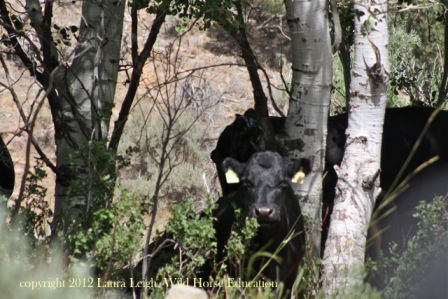(Reno) On December 30th the Nevada Association of Counties (NACO) and the Nevada Farm Bureau Federation filed litigation against the Bureau of Land Management (BLM) Nevada Wild Horse and Burro Program. The suit is essentially a programmatic challenge to the management of wild horses and burros within the state and addresses National programmatic long-term holding issues.
The legal action asks that BLM remove all wild horses to “Appropriate Management Level,” (AML, or number of horses the land can sustain as defined by BLM) and claims severe detriment to the range, livestock operators and the wild horses themselves as BLM does not maintain this number of wild horses. The suit even goes so far as to ask that all horses in long-term holding be sold or destroyed. Advocates say the suit is retaliation.
“This suit comes on the heels of a contentious debate after a few ranchers were given grazing restrictions during the last two years of drought,” states Laura Leigh, founder of Wild Horse Education (WHE), “Those valid restrictions that were given to ranchers that had over grazed areas significantly and continued to graze during the drought were met by vehement opposition by the counties, livestock board and the state of Nevada Department of Agriculture. After years of being catered to by the federal government this is a ‘hit back’ for the few instances of making them actually ‘do the right thing’ for the range. Wild horses have always been the scapegoat.”
The suit claims that the National Academy of Sciences report states that BLMs monitoring methods are inaccurate and that there may be more wild horses than BLM estimates. They use this notion to forward a claim that BLM is in violation of provisions of the Wild Free Roaming Horses and Burros Act that require an “Appropriate Management Level,” (AML) be identified and maintained.
“What is so frustrating is that these ‘mathematical notions’ only work on one side of an equation,” said Leigh. “If BLMs monitoring is flawed then it was also flawed in determining AML making AML an inaccurate barometer of range or herd health. If the data is flawed then it is flawed. You can’t claim accuracy in one portion to further your agenda when you base your agenda on the claim of inaccuracy. I agree the data is, and has been flawed. The notion that AML is a ‘truth’ is pure fiction, however. In many areas the number of wild horses considered ‘appropriate’ is significantly below any real level of genetic sustainability. As an example 200,000 greater sage grouse left in the west has triggered a massive policy change to save them. We have about 25,000 wild horses left wild.”
Public land ranchers graze livestock on 155 million of the 260 million acres administered by the BLM and the Forest Service (FS). This “industry” is subsidized by US taxpayers by over $100 million annually. It is important to remember that only about 4% of livestock utilized in industry comes from public land.
Wild horses and burros exist on about 12% of public land. Within that 12% of public land they are most often given less than 15% of the available forage.
“At a time when issues such as the sage grouse planning documents and hydraulic fracking moving onto Nevada’s public land it is no surprise that ranchers fear a loss of income and are more protective over water rights they might be able to sell, and therefore want less restrictions on,” said Leigh “and historically the livestock community hits the little guy first, wild horses.”
“This is a programmatic challenge and likely not to survive,” said Leigh “we can’t make one in favor of the wild horses and they should not be allowed to make one against. But if it stands we will be ready to argue with specific data instance by instance. I think cattle prices being at an all time high are more motivation in this claim than any concern for the range.”
Leigh filed for Intervenor status in the case to speak for wild horses. The court has granted that status.
~~~~
Wild Horse Education is devoted to protecting wild horses and burros from abuse, slaughter and extinction. To that end we document range conditions, monitor herds, observe roundups and facilities. We address issues at meeting and in litigation when needed.
Links of interest:
Article in HorseTalk, comment at the link: http://horsetalk.co.nz/2014/01/16/nevada-organisations-sue-wild-horse-numbers/#ixzz2qX89EweR
Read the lawsuit here: NACOsuit
See Boyd Spratling speak to NDoA urging support to remove wild horses: http://wildhorseeducation.org/2012/08/03/ndoa-meeting-and-action-request/
Categories: BLM, Department of Agriculture, Legal, Wild Horse Education



You must be logged in to post a comment.